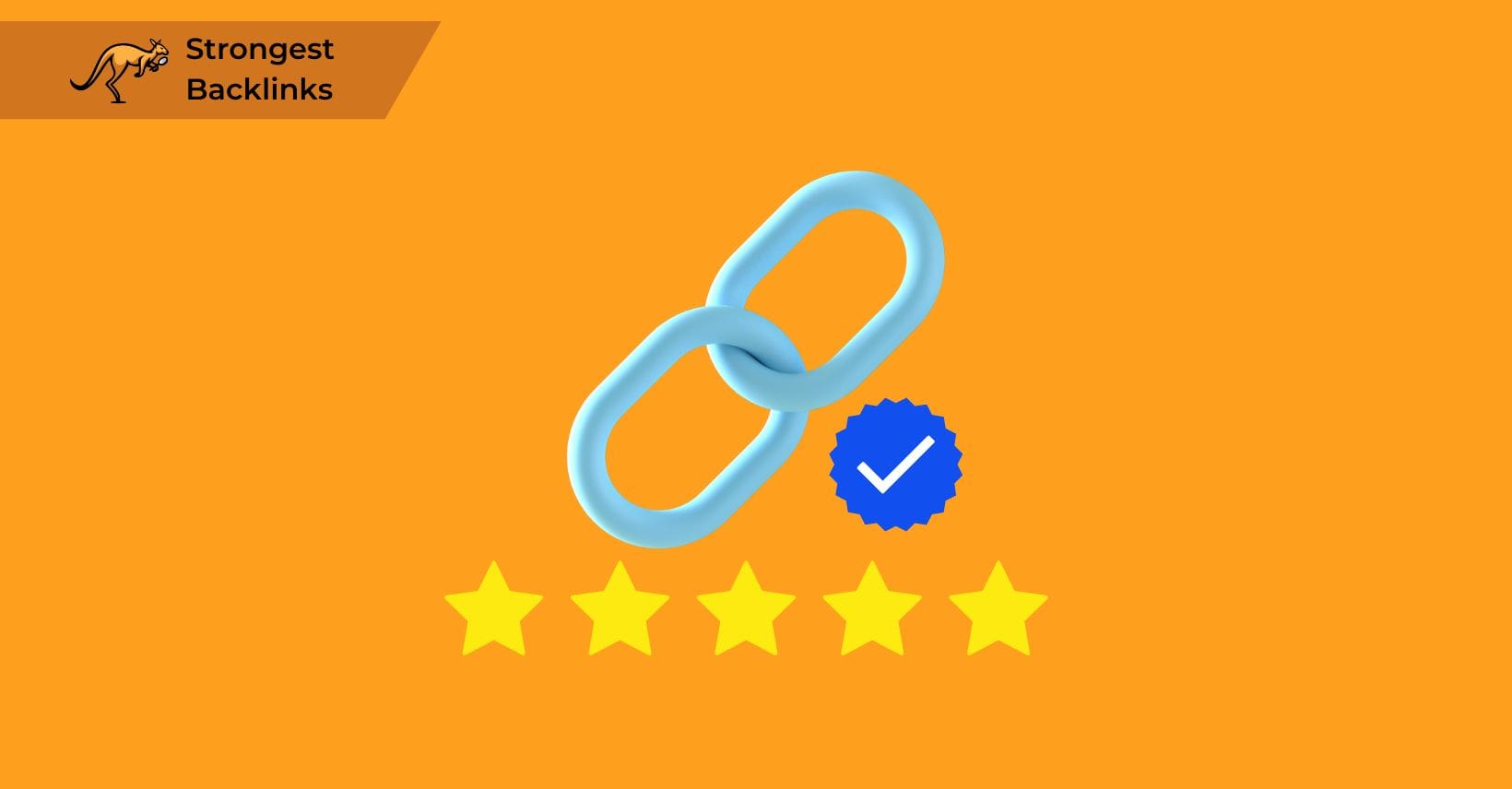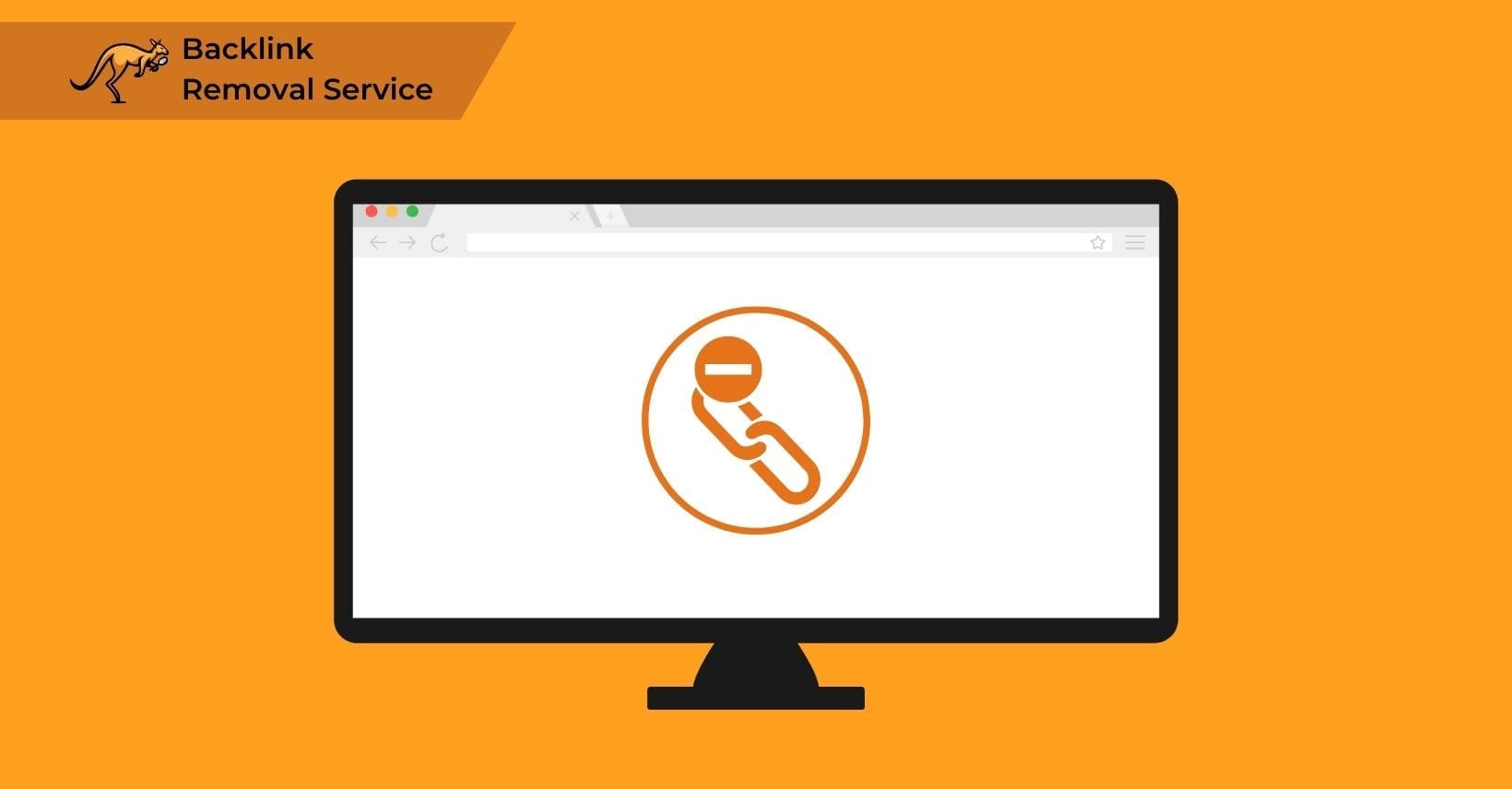Knowing what your audience is looking for and providing the highest-quality and most relevant material makes it a no-brainer for Google to show it to them. This is the secret to outstanding online content. However, this is not an exact science.
You could generate the finest content available from your viewpoint. Still, it is a competitive field, and Google considers many other variables when ranking sites on the SERPs. One of these is the content supplier’s authority (or trustworthiness).
You may believe that “authority” is subjective, but Google has one important measurement technique: backlinks. Backlinks are among the most important SEO ranking variables.
By constructing effective backlinks, you can significantly boost your website’s search engine ranks for your desired keywords and increase page traffic. However, not all backlinks are created equal.
Some backlinks are more useful to search engines than others. The detailed mathematical criteria used by search engines to calculate the worth of a backlink remain unknown, but SEO specialists have identified a few distinct characteristics of a quality backlink.
While Google algorithm updates come and go, certain quality backlink characteristics are permanent.
Let’s look at what produces the strongest types of backlinks for SEO and then discuss a few methods you may use to build such connections for your website.
What Are Backlinks?
A backlink (an inbound link) is just a link from another website to yours. Visually, the link might be displayed in the text, on an image, or as a button – all of these connections qualify as backlinks as long as the source is a separate website.
Backlinks are extremely important in SEO since they are one of every major search engine’s ranking criteria.
Backlinks are viewed as votes for your website in comparison to other websites. Many votes indicate to search engines that this article is worth reading, reputable, and informative.
As a result, the higher your site ranks in Google, Bing, Yahoo, and other search engines, the more votes you have. Including backlinks in a search engine’s algorithm is not a new idea. Backlinks were used to create the original Google algorithm, known as PageRank.
However, Google later made many adjustments to its algorithm. Backlinks continue to thrive as an important ranking element. Along with ‘content’ and ‘rankbrain,’ they are still regarded as one of Google’s three most important search engine ranking criteria.
Not all backlinks are equal. Quality backlinks significantly boost a website’s ranking in the SERPs. One high-quality backlink can outperform 100 low-quality ones, as high-quality backlinks share key attributes. This highlights why backlinks are important.
Why Are Backlinks Important?
Before implementing backlinks into your search engine optimisation plan, it is critical to understand why they are vital to your link-building technique.
Backlinks from other websites are valuable votes that signal to search engines that your material is reputable and worthwhile. As a result, the more “votes” you obtain, the better your site will rank in Google and other search engines.
While there are over 200 recognised Google ranking variables, backlinks are one of the most essential.
This is because a link to another website is more than simply a link; it is a vote of confidence, a suggestion, and a method for publishers to tell their readers that this is a reliable source worth checking out.
When someone spontaneously puts some of these endorsements together, this is known as organic backlinks. It is quite tough to obtain such an endorsement, especially for small enterprises or startups.
However, if you want to improve your SEO performance, you must ensure that you continually generate high-quality backlinks to your website faster and better than your competitors.
However, keep in mind that not all backlinks are made equal. If you consider a backlink to be a vote of confidence, it only makes sense to assess its credibility.
Is the traffic coming from relevant, high-authority sites or spam review sites that manipulate Google bots and SEO tools? Many irrelevant sites are designed to skew Google search results. This brings us to what makes backlinks powerful.
What Makes Backlinks Powerful?
Historically, black-hat SEOs could generate massive backlink profiles and effectively cheat the system using strategies like link farms, PBNs, and comment spam.
However, these black-hat link-building strategies are no longer effective since Google has become aware of them. Too many “unnatural” connections may result in a penalty for your website.
In other words, when it comes to backlinks, quality is equally as important as quantity. Having hundreds of inbound links connecting to the same website is not required.
Obtaining even 20-30 high-quality connections may greatly improve your website’s rating in search engine results pages (SERPs).
Several different factors below affect the strength of your backlink profile. Let’s examine the basics of how these work and then how you can apply them to your link-building strategy.
High-quality backlinks come from authoritative websites
The quality of a backlink’s source website is the key to determining its value.
A single backlink from an authoritative and relevant website is more beneficial than an overload of backlinks from low-quality websites.
Here are some essential measures for estimating the quality (or strength) of a backlink based on its originating website and a few important HTML attributes:
Domain Authority—A website’s Domain Authority metric measures (on a scale of 0 to 100) how trustworthy it is in its speciality or business. The greater a website’s domain authority, the more valuable it seems to search engines, and the most renowned and authoritative websites can make a big difference.
Ranking authoritative websites plays out pretty much how you might expect: authoritative websites give high-quality links, which are more powerful backlinks than those from less authoritative sites. A backlink from a website with a high Domain Authority is usually powerful enough to boost your search engine rankings.
Citation Flow — A website’s Citation Flow metric is a score between 0 and 100 that indicates the number of backlinks to it. If many websites link to it, it will have a high Citation Flow.
Trust Flow—A website’s Trust Flow is a number between 0 and 100 that indicates the quality of its backlinks. If several high-quality websites connect to it, it will have a high Trust Flow.
If it contains backlinks from questionable websites, its Trust Flow score will suffer. Backlinks from websites with a high Trust Flow metric are typically beneficial.
Spam Score — A website’s Spam Score metric is a statistic (on a scale of 0 to 17) that indicates the likelihood that the website will be penalised by search engines (for being spammy). A Spam Score of less than five can be regarded as safe. A backlink from a website with a Spam Score of less than five will be considered a positive backlink.
Dofollow—A dofollow backlink is usually beneficial. Later in this post, we will discuss the meaning of a dofollow and nofollow links.
Index status — A web page’s index status indicates whether search engines have indexed it. A website that has not been indexed may not appear in search results.
A website (or a web page) is frequently marked as non-indexed if it has been penalised by Google or if its robots.txt file is incorrectly set. A backlink from an unindexed page will not give you any SEO juice.
Furthermore, if such a backlink comes from a website removed from Google’s index due to a penalty, it may also hurt your rankings.
External link count — A page’s external link count statistic indicates its number of external links. If a web page contains many external links, you should investigate whether the page is spammy.
A backlink from a website that connects to multiple pages may not be as beneficial. These could include other backlinks, such as guest post bio links or comment backlinks. This leads us to the most common types of backlinks.
The Most Common Types of Backlinks
There are several main types of backlinks, varying degrees of relevance depending on the website. These eight backlinks will help you design your link-building strategy for getting high-quality connections to enhance your SEO.
1. Editorial Backlinks
Editorial descriptions with links to your site contained within relevant, high-quality content are the ideal backlinks.
In general, editorial backlinks are produced when your content (such as an article or infographic) is cited as the source of particular information, a business representative is quoted, or your site is included in a link roundup on a certain topic.
Create evergreen content that builds your position as a thought leader, positioning your site and brand as a go-to location for interviews and industry expertise. Create shareable and entertaining content with the potential to go viral.
Use SEO tools to find popular keywords and topics competitors have mastered but your site has yet to address.
2. Guest Blogging Backlinks
When submitting guest pieces to established websites, it is generally possible to include an editorial backlink to your website. Guest blogging outreach should be an important aspect of practically any SEO strategy. To get these chances, you should try to use high-quality websites.
3. Backlinks in Company Profiles
When you create a digital presence for your company on business listing websites, social networks, industry directories, and review sites, you nearly always have the opportunity to include a link to your website (or several).
These listings are viewed by search engines as evidence that a site has been around for a long time.
4. Webinar-generated backlinks
Webinars (and recordings) provide valuable information on which sites can link. Websites frequently use webinars to link to your organisation and highlight what your firm does.
These backlinks can be obtained utilising tactics similar to those used for blog promotion. Your webinar might be a reference for the websites you want to guest blog.
5. Backlinks for Free Tools
Offering a valuable tool for free is another excellent strategy to attract attention and backlinks, which have a major and long-term impact on SEO.
To create backlinks, promote the tool on sites with a similar audience to yours (use SEO tools to locate them) and on sites where you will be guest blogging. This does not make very powerful backlinks, but it can create many organic links.
6. Acknowledgment Backlinks
Sites typically show acknowledgements when a firm contributes, has a representative speak at or sponsors an industry event, etc.
Using these acknowledgement backlinks, you may establish the source of your competitor’s backlinks and devise a strategy to get recognition for your website. They are not the most powerful backlinks, but they are worth being aware of.
7. Guest Post Bio Links
If a site that accepts guest blogging does not permit hyperlinks within the post, they will almost always be permitted within the author’s bio area. It makes no difference that these hyperlinks are not related to editorial content.
They continue to impact SEO since visitors frequently hyperlink to websites with more readership. This ensures readers know where others go to read blogs and articles and locate recipes.
8. Comment Backlinks
When you leave a comment on a blog post, you are usually allowed to include a link to your website. Spammers regularly use this, which may be exploited to build malicious links.
Sharing links on high-quality blogs can drive traffic to your site and increase brand recognition when people post genuine comments. This quick and easy method helps obtain more backlinks. Now, let’s explore why dofollow backlinks are the most powerful backlinks.
Dofollow backlinks are the most powerful backlinks
Dofollow backlinks carry the SEO juice from the website that provides the backlink to the website that receives the backlink. In most cases, dofollow backlinks are one of the most important ways that link juice flows between sites when websites link to one another.
This is huge for search engine rankings, driving more traffic and more backlinks organically and making this one of the most powerful backlinks categories.
So, if website A has a Domain Authority of 80 and provides a dofollow backlink to website B, which has a Domain Authority of 20, website A is passing along important SEO value to website B, thereby helping website B rank higher.
Dofollow backlinks can be valuable to link-building campaigns, as they easily provide organic traffic and website visitors.
Consider dofollow backlinks a vote of confidence. When a website provides a dofollow backlink to another website, Google understands that the website recommends it as a reputable resource for a certain topic.
Dofollow backlinks are powerful backlinks, valuable SEO signals that search engines employ to determine a website’s relevance and authority on a certain topic.
Dofollow backlink vs Nofollow link
A nofollow backlink does not send any SEO juice to the website that receives it. When search engines see nofollow backlinks, they disregard these website links.
Every backlink is a dofollow backlink by default. On the other hand, websites can make a backlink nofollow by adding the nofollow attribute.
However, many websites do not separately apply the nofollow tag to their backlinks. Instead, they use the nofollow meta tag applied at the page level. When search engines discover a nofollow meta tag in a website’s header, they disregard all of the links on that page.
How to Determine Whether a Website Provides Dofollow Links
Always begin by targeting websites that provide dofollow backlinks while creating backlinks.
It is not a bad thing to have nofollow links in your backlink profile—in fact, it helps your connections appear more “natural” to Google, which is a good thing—but if you are putting time and effort into a link-building campaign, you will want to aim for backlinks that will help your website rank higher.
There are several simple ways to determine whether a website provides dofollow backlinks. One technique link builders use is to view a website’s source code to see if it has dofollow backlinks.
Right-click on the web page you want to inspect, select View Page Source, and search for “nofollow.” This helps identify links that don’t pass SEO value. Now, let’s explore how to start building backlinks better.
How to Start Building Backlinks Better
When it comes to link building, there are a few important options.
1. Producing excellent content (and obtaining editorial backlinks)
The first step in gaining influential backlinks to your website is to develop the greatest and most useful content in your area so that excellent websites automatically link back to your website—all on their own, without you ever asking.
Editorial backlinks are those that are “earned” exclusively via content. While editorial backlinks are desirable, obtaining them is difficult.
With most websites recognising the importance of special, high-quality content, creating good content and waiting for backlinks is no longer enough.
Here is where the manual link-building campaigns help.
2. Conduct link-building initiatives
Manual link-building initiatives at scale are the most reliable technique for developing backlinks to a website. Manual link building involves contacting many websites in your niche and seeking backlinks.
Here are some link-building efforts to get you started.
1. Including your website in roundups
Regardless of your product or service, your area will likely be brimming with bloggers posting “the top ten X products/services/solutions” lists.
Such roundups deliver relevant traffic to the websites on the list and provide backlinks. So watch for such roundups and strive to be mentioned in them.
2. Guest blogging
Guest blogging is one of the most time-consuming yet successful link-building strategies. You must contact relevant and authoritative websites in your niche and pitch blog post ideas to them.
Guest posting is a very effective option for creating organic links. All it takes is a single link pointing to your site somewhere in the guest posting text, and targeted traffic will be able to reach your site much more easily.
You will receive a backlink in exchange for your work. Use useful anchor language when providing a link back to your website. When considering a backlink, Google and other search engines look at the anchor text. Anchor text is the text used in the link itself.
3. Identifying websites that connect to your rivals
You may determine which websites provide backlinks to your competition. A website that links to your competitor’s website might also connect to yours. Examine your rivals’ backlinks and contact those websites that provide quality backlinks.
4. The Skyscraper Technique.
This entails researching the competitors in SERP rankings and outperforming their material with much longer and better content on a certain topic.
These link-building tactics might provide you with even more excellent starting points.
- However, before using any of these strategies, consider the quality of the ties you can develop with each. Measure how the prospective links perform on the parameters we described previously.
3. Reclaiming Unlinked Mentions
Reclaiming unlinked brand mentions is most likely the simplest and fastest strategy to earn high-quality backlinks.
You can use something straightforward (and free) like Google Alerts to monitor who mentions your business on blogs or in the press.
Suppose you want more information about your mentions, such as the number of shares or the domain authority of the website where the mention originated. You may use free tool backlinks like BuzzSumo, Ahrefs Content Explorer, or Mention.
You may notice no connection to your website when the author mentions your brand, product, or service. That is when you should write them a brief message requesting correct link attribution.
This also helps the publisher to provide a better experience for its readers by allowing them to click through and learn more about the brand featured. It is a win-win situation.
The innovative aspect of this strategy is that you can use the same method to reclaim links for additional references to your brand, such as events you arrange, employee names, research papers, etc.
You may, for example, keep an eye out for interviews with your company’s leaders and request a connection back to their profile page on your website. Alternatively, you may search for mentions of reports or figures you have published and request correct attribution to the source.
The great thing about unlinked mentions is that the website you are contacting has previously referenced your business, so there is a legitimate reason you are in their inbox.
A courteous and nice email is frequently sufficient, and the success rate for this form of campaign is far greater than for any other link-building tactic.
4. Set Up Contextual Links with Target Keywords
Have you ever noticed how some articles provide supplementary resources in the text or a “Read more” section?
Contextual links are links that are embedded in the content of an article.
The key to obtaining contextual connections is identifying the suitable link prospect to contact. You may locate them by looking for articles connected to your advertising material that contain a “Read more” section.
When you develop the practice of generating backlinks, you may discover that other publishers approach you directly. With the correct relationship-building technique, publishers will approach you rather than you approaching them.
5. Get Mentioned in “Best X” List Articles
Before making a purchase decision, today’s shoppers like to research all available possibilities. They frequently consult comparison websites or articles like “The 13 Best Free Email Marketing Tools in 2021” to see other users’ recommendations.
Use a keyword research tool and look at monthly search volume to understand how popular these Best X articles are in your sector. According to Ahrefs statistics, the keyword “best CRM for small businesses” receives over 3,400 monthly searches.
Having your company listed in articles that list the finest items similar to yours is a great approach to strengthening your brand, getting more people to test your product, and, of course, getting high-quality backlinks.
If you shift your focus from ranking #1 to monopolising all of the sites on the first page of a search query, you can double the number of click-throughs to your site, your website traffic, and, eventually, your sales volume. Not to mention the less quantifiable variables like social proof and brand recognition.
Start with a simple Google search to identify high-ranking blogs about your product or sector to have your product or service featured in a list round-up.
List the most relevant prospects and rate them according to domain authority (or, if you are using Ahrefs, Domain Rating), backlink profile, ranking, and referral traffic potential.
Once you have completed your final list, create a brief pitch for the author to demonstrate why your product or service deserves to be featured on their list.
A quick, effective pitch and a custom email can help you stand out in any outreach effort.
6. Serve as a resource for other publishers
You may become a source for other bloggers and journalists by using your experience and exceptional data.
You will receive a backlink every time someone quotes you. However, high domain authority backlinks are not the sole advantage of this strategy (though they are a major advantage).
You will also enhance brand recognition and referral traffic to your website by being a trustworthy source, encouraging more people to follow backlinks to your site organically.
To begin, sign up for HARO (Help A Reporter Out). This free service links expert sources (such as yourself) with bloggers and journalists seeking contributions to articles and press releases.
Here is how it works: HARO will email you every day with requests from authors in your field. You can choose the ones relevant to your company and react through email, providing your credentials for their press release.
Because most of these authors receive many entries, speed is critical. If you are one of the first to react, you have a better chance of being spotted and chosen for the final piece.
If chosen, you will most likely receive an email from a journalist or blogger informing you that the story is live. This is a great way to get seen through press releases and journalistic articles.
7. Refresh Old Content
If you come across an article or a study report that has not been updated in a while, look at how many backlinks it has. If several articles cite that information, you have discovered a true gem. You can make a better, more recent piece with more relevant info.
Once the material is up, you can contact bloggers or journalists who have linked to the previous version to inform them about the new version. Often, you will see the effects of your outreach in the form of backlinks or social media shares within a few days or weeks.
However, establishing that relationship in the first place has additional advantages. For example, you may work on additional initiatives to help you build your brand and attract visitors.
8. Create Ultimate Guides
An Ultimate Guide is information intended to be the most comprehensive reference on a particular topic. It covers enough ground that you will not need to look elsewhere to understand more about the subject.
These might not be good for Google’s algorithm but are great for organic traffic and forum backlinks.
These Ultimate Guides generate inbound backlinks since they assist bloggers and journalists in referencing an idea they mention.
For example, if someone creates a post titled “How to Get Started with SEO,” they may focus on a few suggestions and methods without describing what SEO is in detail; instead, they can link to an SEO Ultimate Guide if their readers have more questions.
9. Make Use of Images to Gain Links and Mentions
Infographics are perhaps the most commonly utilised visual element for gaining backlinks. If you haven’t done so before, it is always a good idea to experiment with them.
If you do not think infographics are right for your company, here are a few additional visualisations to consider:
- Original data charts and graphs
- Diagrams may be used to communicate complicated topics graphically
- Templates for a single-page
- Free photo galleries available for anyone to use
10. Make use of the Broken Link Building Method
This strategy involves contacting a website with a broken outbound link (a link to an external source) and requesting that it be updated with links to one of your pages.
Of course, your page must be a solid resource on the topic they previously connected to, so replacing the broken link with yours makes sense.
This strategy works well because it adds much value to webmasters: It helps them solve a problem on their website and enhances the reader experience.
The difficulty with this strategy is, of course, locating these broken links. You have a few alternatives here:
You can look for broken links on other websites and identify comparable resources to offer in their place.
Alternatively, you could look for a single dead page (404) that used to receive many links, replicate that article or offer better, more relevant material, and then contact folks who connected to the original item.
After identifying target websites and creating your content, start your outreach with brief, simple emails that focus on being helpful rather than just obtaining backlinks. This approach builds better relationships and increases the likelihood of success. Now, let’s discuss the importance of having the right backlink checker SEO tools.
Make Sure You Have The Right Backlink Checker SEO Tools
Now that you have compiled a list of methods to employ in your next link-building campaign, ensuring that you have the resources you need to succeed is essential.
Let us look at some of the most valuable SEO tools you can use to ensure you have great links that provide all-important link juice to your website.
1. Ahrefs Backlink Analyzer
Ahrefs is the most comprehensive backlink database, including up-to-date information. The free version of Ahrefs displays the top 100 backlinks, top 5 anchors, and top 5 pages. That should give you a good overview of your backlinks.
If you want to go further, the subscription edition provides significantly more detailed data and access to tools that may be valuable in a link-building effort, such as Content Explorer or Broken Outbound Links.
2. Neil Patel’s Backlinks
It may not find as many backlinks or referring websites as Ahrefs, but the free version provides much information. For example, you may export up to 5,000 backlinks and examine the Source Page Title, URL, and anchor text.
You can exclude or include domains, anchors, or zones when filtering. Overall, trying out this free tool is worthwhile.
3. MonitorBacklinks
MonitorBacklinks captures nearly as many referring domains as Ahrefs. It is also unusual in providing information on the top backlinks based on Trust Flow or Citation Flow. Unfortunately, you must upgrade to their paying version to access more of their database.
4. OpenLinkProfiler
OpenLinkProfiler is an excellent tool for examining your backlink profile. The disadvantage is that their link database is very small compared to Ahrefs or MonitorBacklinks.
Still, you may obtain a lot of information (for free) by filtering the accessible backlinks by categories like industry, TLDs, anchors, or LIS (Link Influence Score). I have not seen that in other free tools.
This tool also includes charts showing which pages receive the most links or which nations connect to your website the most.
5. RankWatch
RankWatch offers an excellent Dashboard feature that lets you see your backlink profile. You may examine your link acquisition trend over the last three months, referring to domain acquisition and anchor dispersion, among other things.
The summary charts are free to use. However, you must upgrade to the commercial version to access the complete list.
6. CognitiveSEO
CognitiveSEO is excellent for gaining an overview of total backlinks and referring websites – and, most significantly, for determining link velocity. Without making an account, you may view the link acquisition trend for the previous 6 months for free.
Another visually appealing report is the Top 5 website pages, which show how your website performs based on backlinks or referral domains.
All the tools mentioned provide essential information to help you start link development. They offer a macro perspective of your backlink profile, each with exceptional additional insights. Experiment with them to find which one suits you best. Now, let’s discuss which backlinks you should avoid.
Which Backlinks Should You Avoid?
1. Paid Links
The worth of your site is determined by how well it is loved by other genuine and earned sites. According to Google, buying and selling links can harm a site’s search rankings. When you purchase links to get an SEO advantage, you do not get what you pay for with your link-building campaigns.
2. Non-newsworthy backlinks in press releases
It is not a good idea to write press releases to obtain backlinks. It may harm your SEO because this method is thought to generate spam. Visitors to websites hate being inundated by such backlinks.
3. Directory Links that are Low Quality or Irrelevant
Setting up profiles in directories that are not reputable or well-regarded (or that are not related to your business) may be detrimental to your SEO. They are also considered spam by many website visitors.
4. Forum Backlinks of Low Quality
One brand’s forum postings, especially those with hyperlinks, should be limited to high-quality forums and genuine disputes. People who try to spam these sites with links may not receive the desired results.
5. High Spam Score Domains
Search engines perceive websites with high spam scores to be spammy or low-quality. Backlinks from these sites can harm a website’s SEO and should be avoided, even if the anchor text looks relevant.
Concluding Insights on Effective Backlink Building
Understanding the dynamics of backlinks is crucial for effective SEO and achieving higher search engine rankings. High-quality backlinks from authoritative websites can significantly boost your website’s visibility and credibility. Strategies like editorial backlinks, guest blogging, reclaiming unlinked mentions, and tools like Ahrefs and MonitorBacklinks can help you build a strong backlink profile. However, it’s equally important to avoid low-quality backlinks, such as paid links or links from spammy directories, as these can harm your SEO efforts. By focusing on quality and relevance, you can create a sustainable link-building strategy that enhances your website’s performance and drives consistent, high-quality traffic.





